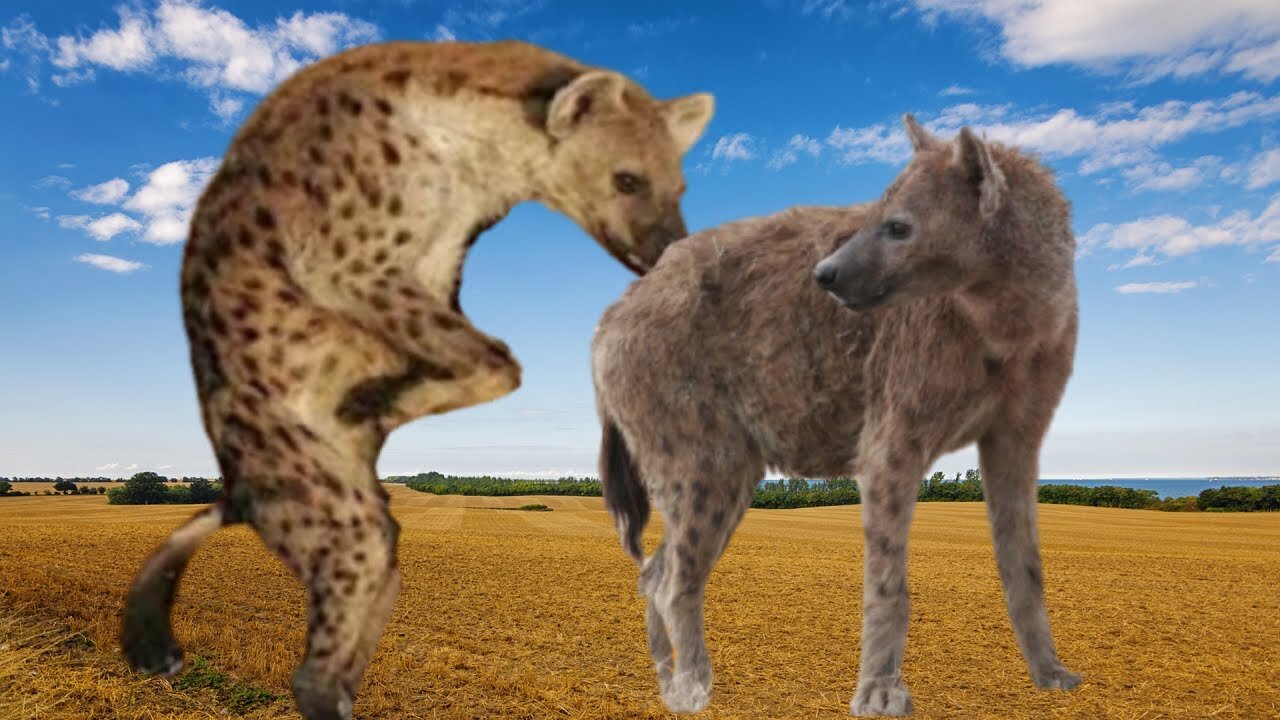Premium Only Content

Complete encounter with hyenas - a canine beast with relentless claw bites can even kill you smiling
Complete encounter with hyenas - a canine beast with relentless claw bites can even kill you smiling
Hyenas are medium to large carnivorous animals that occupy the top places in the food chain; the exception is the land wolf, which is an insectivore. Its head is large in relation to the body, with relatively large ears with a beaked or rounded termination and powerful maxillary muscles. The hind legs, strongly muscled, are shorter than the front legs, which gives the animal an asymmetrical appearance. Despite being efficient hunters, much of the hyena feed is based on carcasses that they find or steal from other carnivores. Hyenas are not speed runners, but they are resistant and can chase prey for several kilometers. Teething is made up of 32 to 34 strong teeth adapted for chewing bones. Its digestive system is quite well adapted to the digestion of bones and other harder parts of its prey. This efficiency in harnessing all the nutrients of a carcass is one of the reasons for the group's evolutionary success - in which the merely runner shapes, with a dentition more adapted to the consumption of soft parts, disappeared due to the ecological competition with the canids. With the exception of the land wolf, which is solitary, hyenas are gregarious animals and have nocturnal habits, although they may occasionally be active during the day. The hyena produces a sound similar to that of a laugh.
Their societies are dominated by females, which is not common among mammals, and females have very high levels of aggression, generating male hormones, which in fact interferes with procreation. Even the chicks are very aggressive and it is common to kill each other. Hyenas are born with their eyes open and their teeth fully formed.
They live in clans of up to forty animals. They usually hunt prey like wolves and rarely attack in ambush.
The group emerged in Eurasia in the Miocénico (about 10 million years ago), from the family Viverridae, with the separation of the genera Crocuta and Hyaena occurred in the Pliocene. The maximum diversification of hyenas was found in the Plistocene, with nine species that lived in Europe, Asia and Africa. European varieties became extinct at the end of the Ice Age, due to the extinction of the megafauna on which they fed and the dramatic climatic changes that then occurred.
-
 0:15
0:15
Mintbrookoffgrid
4 years agoDangerous encounter with young moose
37 -
 1:12
1:12
Tnewton
4 years agoClose Encounter with a Fox
1.18K -
 1:19
1:19
horsemanwangg
4 years agoParker's First Encounter with Snowshoes
121 -
 29:20
29:20
Stephen Gardner
1 hour ago🔥YES! Trump unleashes Democrats’ worst nightmare!
6.42K6 -
![[Ep 731] Trump Leading the World | Islam NOT Compatible with West | Guest Sam Anthony [your[NEWS](https://1a-1791.com/video/fww1/93/s8/1/c/n/K/a/cnKaz.0kob-small-Ep-731-Trump-Leading-the-Wo.jpg) LIVE
LIVE
The Nunn Report - w/ Dan Nunn
2 hours ago[Ep 731] Trump Leading the World | Islam NOT Compatible with West | Guest Sam Anthony [your[NEWS
160 watching -
 2:05:30
2:05:30
Side Scrollers Podcast
6 hours agoEveryone Hates MrBeast + FBI Spends $140k on Pokemon + All Todays News | Side Scrollers Live
74.4K2 -
 46:56
46:56
The White House
5 hours agoPress Secretary Karoline Leavitt Briefs Members of the Media, Aug. 19, 2025
43.5K67 -
 1:11:36
1:11:36
Sean Unpaved
4 hours agoFootball Flashpoint: Bengals' D in Distress, Colts' Bet on Jones, & Micah's Trade Talks
34.5K2 -
 LIVE
LIVE
The Robert Scott Bell Show
2 hours agoVaccine Lawsuits & Legal Fights, Autism–ADHD Link to Tylenol, MAHA Action, Caitlin Sinclair, Fat Jabs for Pets - The RSB Show 8-19-25
58 watching -
 2:57:22
2:57:22
Right Side Broadcasting Network
8 hours agoLIVE REPLAY: White House Press Secretary Karoline Leavitt Holds a Press Briefing - 8/19/25
90.1K47